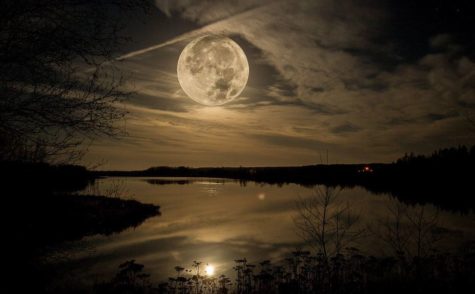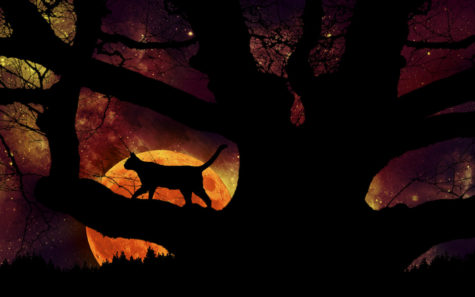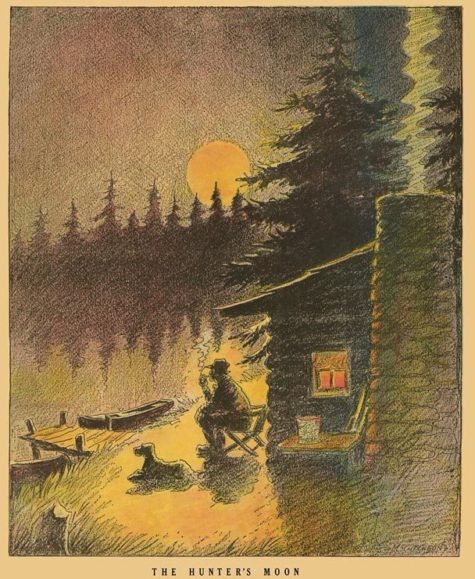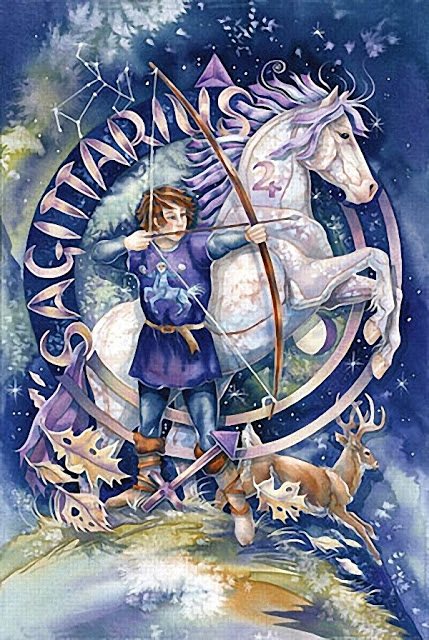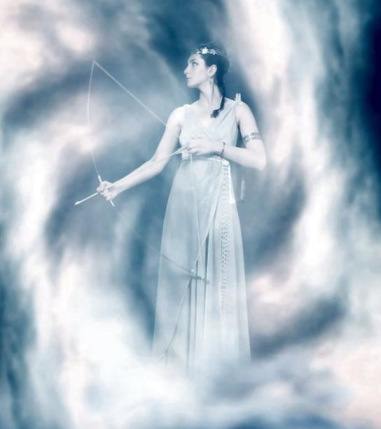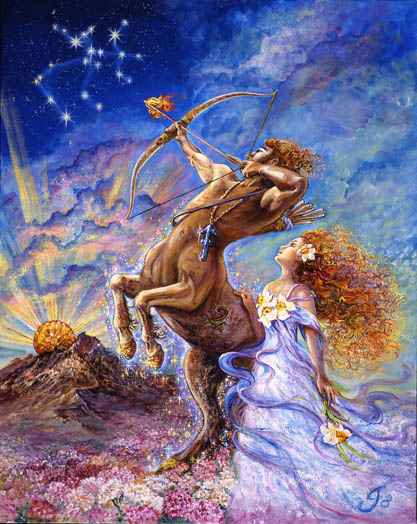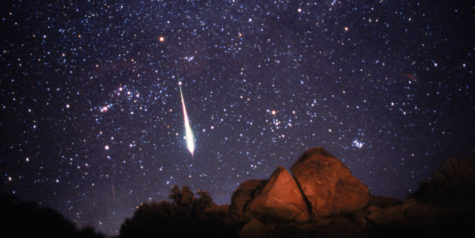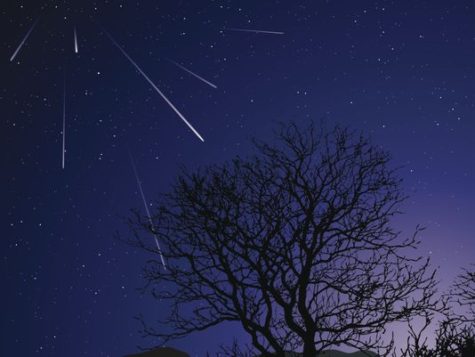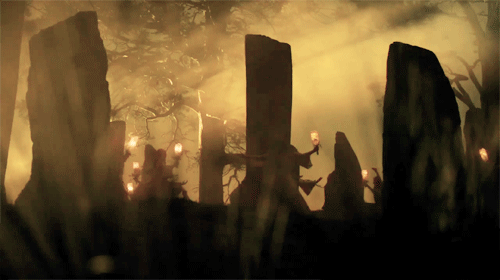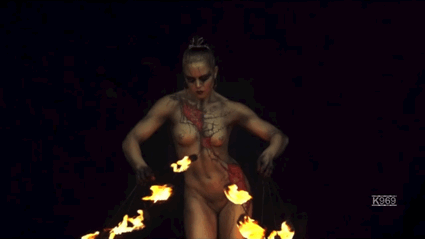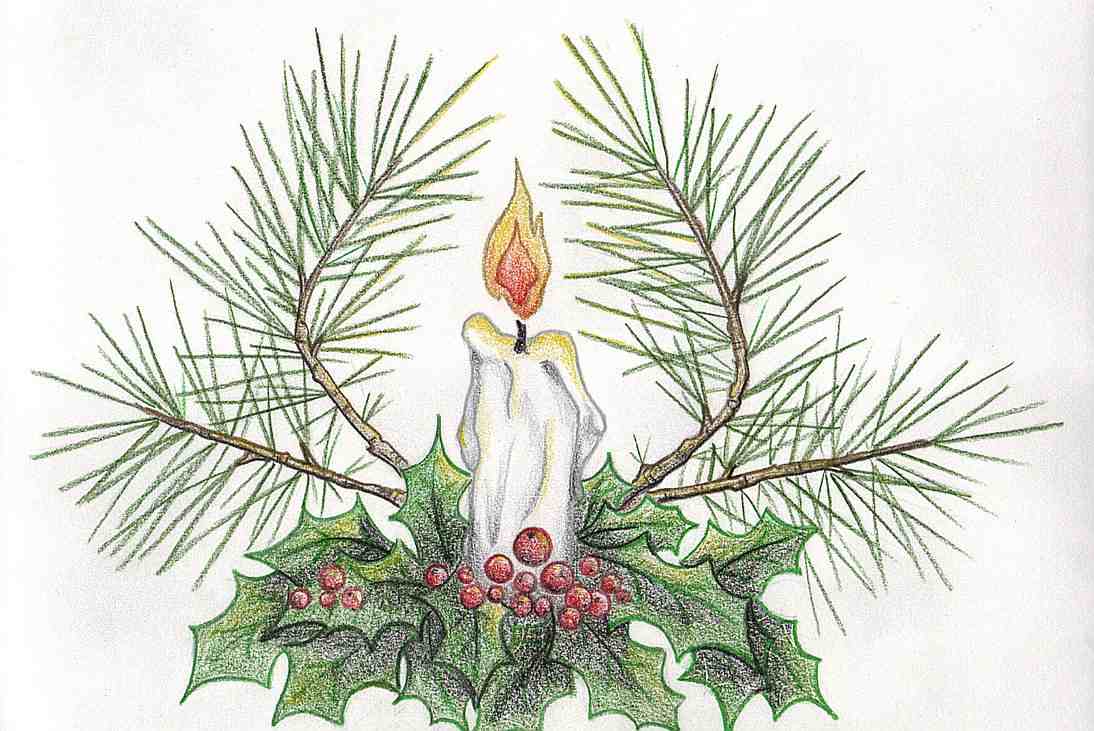November Skies
The Mourning Moon is upon us. As the days grow shorter and the sun’s life-giving fires are banked, sometimes it seems so dark we feel the light will never return. This moon, however, is a reminder that death is just a part of the endless cycle of life, death, and rebirth.
It’s also known as the Fog Moon or Snow Moon, depending on where you live. Some Native American tribes referred to it simply as The Moon When Deer Shed Antlers (although in most regions it’s more accurate to say they’re shedding their velvet – a buck doesn’t usually lose antlers until later in the winter, unless you’re very far north).
Correspondences:
- Colors: Gray, blues
- Gemstones: Lapis lazuli, turquoise, topaz
- Trees: Cypress, alder, hazel
- Gods: Bastet, Isis, Kali, Hecate, Astarte
- Herbs: Thistle, betony, verbena, fennel
- Element: Water
In the early Celtic society, November was the beginning of the new year, and so it makes sense to use the magic of this moon phase to celebrate new beginnings.
This is a time of washing away the baggage of the past and letting it go. Once you’ve done that, you’ll be able to focus on the joys of the future. During the Mourning Moon phase, say goodbye to bad habits and toxic relationships, and get a fresh start for the new year. Work on developing and strengthening your connection with Spirit.
The Hunter’s Moon is so named because plenty of moonlight is ideal for hunters shooting migrating birds in Northern Europe. The name is also said to have been used by Native Americans as they tracked and killed their prey by autumn moonlight, stockpiling food for the winter ahead.
Traditional association with feasting:
In the northern hemisphere, the Hunter’s Moon appears in October or November, usually in October. Traditionally, it was a feast day in parts of western Europe and among some Native American tribes, called simply the Feast of the Hunter’s Moon, though the celebration had largely died out by the 18th century. There is a large historical reenactment by that name in Lafayette, Indiana during the early part of October 2010
Variation in time of moonrise:
In general, the moon rises about 50 minutes later each day, as it moves in orbit around Earth. All full moons rise around the time of sunset. The Harvest Moon (full moon closest to the Autumnal Equinox) and Hunter’s Moon are special because — as seen from the northern hemisphere — the time of moonrise on successive evenings is shorter than usual. The moon rises approximately 30 minutes later, from one night to the next, as seen from about 40 degrees N. latitude, for several evenings around the full Hunter’s or Harvest Moons.
Thus there is no long period of darkness between sunset and moonrise, around the time of these full moons. In times past, this feature of these autumn moons was said to help hunters tracking their prey (or, in the case of the Harvest Moon, farmers working in the fields). They could continue tracking their prey (or bringing in their crops) by moonlight even when the sun had gone down. Hence the name Hunter’s Moon.
The reason for the shorter-than-usual rising time between successive moon rises around the time of the Harvest and Hunter’s Moon is that the orbit of the Moon makes a narrow angle with respect to the horizon in the evening in autumn, leading the Moon to higher positions in the sky each successive day.
Brightness and distance:
The Hunter’s Moon is not brighter, smaller or yellower than during other times of the year, but all full moons have their own special characteristics, based primarily on the whereabouts of the ecliptic in the sky at the time of year that they are visible.
The full moons of September, October and November, as seen from the northern hemisphere — which correspond to the full moons of March, April and May as seen from the southern hemisphere — are well known in the folklore of the sky.
Since the Moon’s sidereal period differs from its synodic period, the perigee of the Moon (the point where it is closest to the Earth) does not stay in sync with the phases of the Moon. Thus the Hunter’s Moon does not correspond to any special timing of the Moon’s distance from the Earth. This is why the Hunter’s Moon is not, in general, brighter than any other regular full moon.
Source: Wikipedia
Sagittarius is the ninth sign of the zodiac. The sun enters Sagittarius at slightly different times each year, usually around Nov 22, sometimes the day before or the day after.
- Symbol: Archer
- Element: Fire
- Gemstone: Amethyst
- Key word: I See
Sagittarians are friendly, open, optimistic people with a positive, enthusiastic approach to life. They are honest and loyal, but have a tendency to be outspoken at times. They are independent people who enjoy having room and space around them. Consequently, they are frequently interested in sports and travel.
From 365 Goddess, we have this for today:
Themes: Creativity; Energy; Communication; Balance; Harmony; Change
Symbols: Bow and Arrow; White Items; Milk; Seawater
Presiding Goddess: Leucothea
In Greek tradition, this woman gave birth to the centaurs and was a wet nurse to Dionysus. Her name translates as “milk-white goddess,” alluding to a strong maternal nature. In later times she became a sea goddess, bearing the visage of a mermaid. Through this transformation we see the mingling of the spiritual nature (water) with that of the earth (half-human appearance) to create Sagittarius’s customary energies.
To Do Today:
In astrology, Sagittarius is the centurion archer who represents a harmonious mingling of physical and spiritual living. Those born under this sign tend toward idealism, upbeat outlooks, and confidence. Like Leucothea, Sagitrarians seem to have a strong drive for justice, especially for those people under their care.
To consume a bit of Leucothea’s maternal nature or invoke her spiritual balance in your life, make sure to include milk or milk products in your diet today. Or, wear something white to figuratively don her power.
For help with personal transformations, especially those that encourage personal comfort and tranquility, soak in a nice long saltwater or milk bath today. As you do, ask Leucothea to show you the right steps to take next.
More About the Sun in Sagittarius:
The Sun is in Sagittarius from November 23 to December 21, depending on the year.
- Ruler: Jupiter
- Season: Fall
- Modality: Mutable
- Metal: Tin
- Stone: Topaz
- Color: Turquoise
- Flowers: Narcissus; Chrysanthemum;
- Anatomy: Hips, Thighs, Muscles
- Attributes: optimistic, restless, enthusiastic, adventurous, honest, irresponsible, outspoken, independent
Restless, cheerful, and friendly, Sun in Sagittarius people are generally on the go. They have a love of freedom, and a disdain for routine. Generally quite easygoing, Sagittarians make friends with people from all walks of life. They love to laugh and tease, and get along well with both sexes.
Sagittarians have an often blind faith in people, and in the world. Their optimism is infectious, although it can get them into trouble from time to time. These are curious people who love to learn. Their idealistic nature is hard to miss.
Although generally easygoing, Sagittarius is a fire sign. This gives natives a generally quick temper. Fortunately, they’re usually as quick to forget what got them angry in the first place.
The need for escape is generally strong, and some Solar Sagittarians come across as a little irresponsible. They’re generally easy to forgive, however. After all, their direct, honest approach in life is admirable.
Source: Cafe Astrology
The Leonids is an average shower, producing up to 15 meteors per hour at its peak. This shower is unique in that it has a cyclonic peak about every 33 years where hundreds of meteors per hour can be seen. That last of these occurred in 2001. The Leonids is produced by dust grains left behind by comet Tempel-Tuttle, which was discovered in 1865. The shower runs annually from November 6-30. Best viewing will be from a dark location after midnight. Meteors will radiate from the constellation Leo, but can appear anywhere in the sky.
Source: SeaSky
The Taurids is a long-running minor meteor shower producing only about 5-10 meteors per hour. It is unusual in that it consists of two separate streams. The first is produced by dust grains left behind by Asteroid 2004 TG10. The second stream is produced by debris left behind by Comet 2P Encke. The shower runs annually from September 7 to December 10. Best viewing will be just after midnight from a dark location far away from city lights. Meteors will radiate from the constellation Taurus, but can appear anywhere in the sky.
Source: SeaSky
